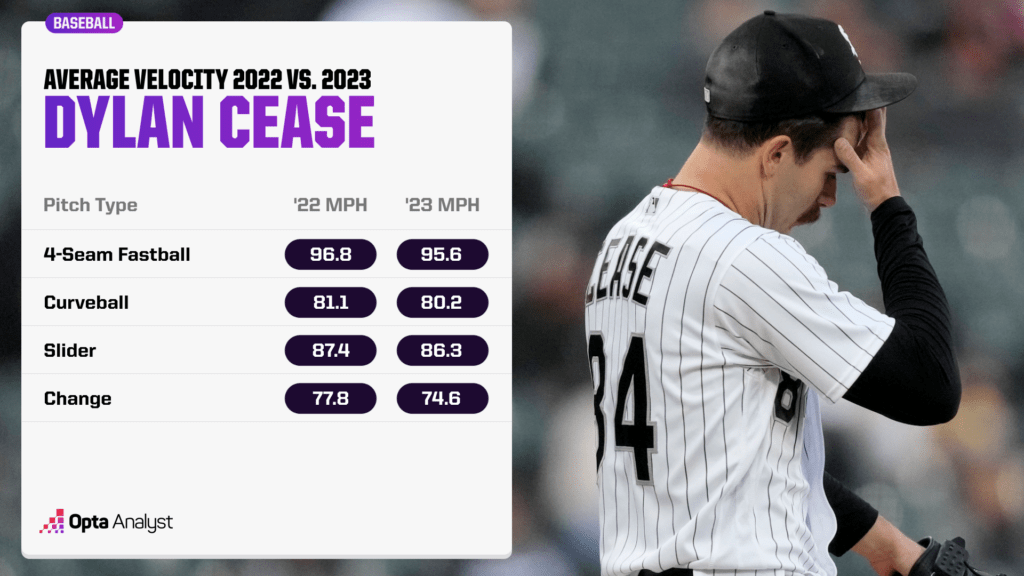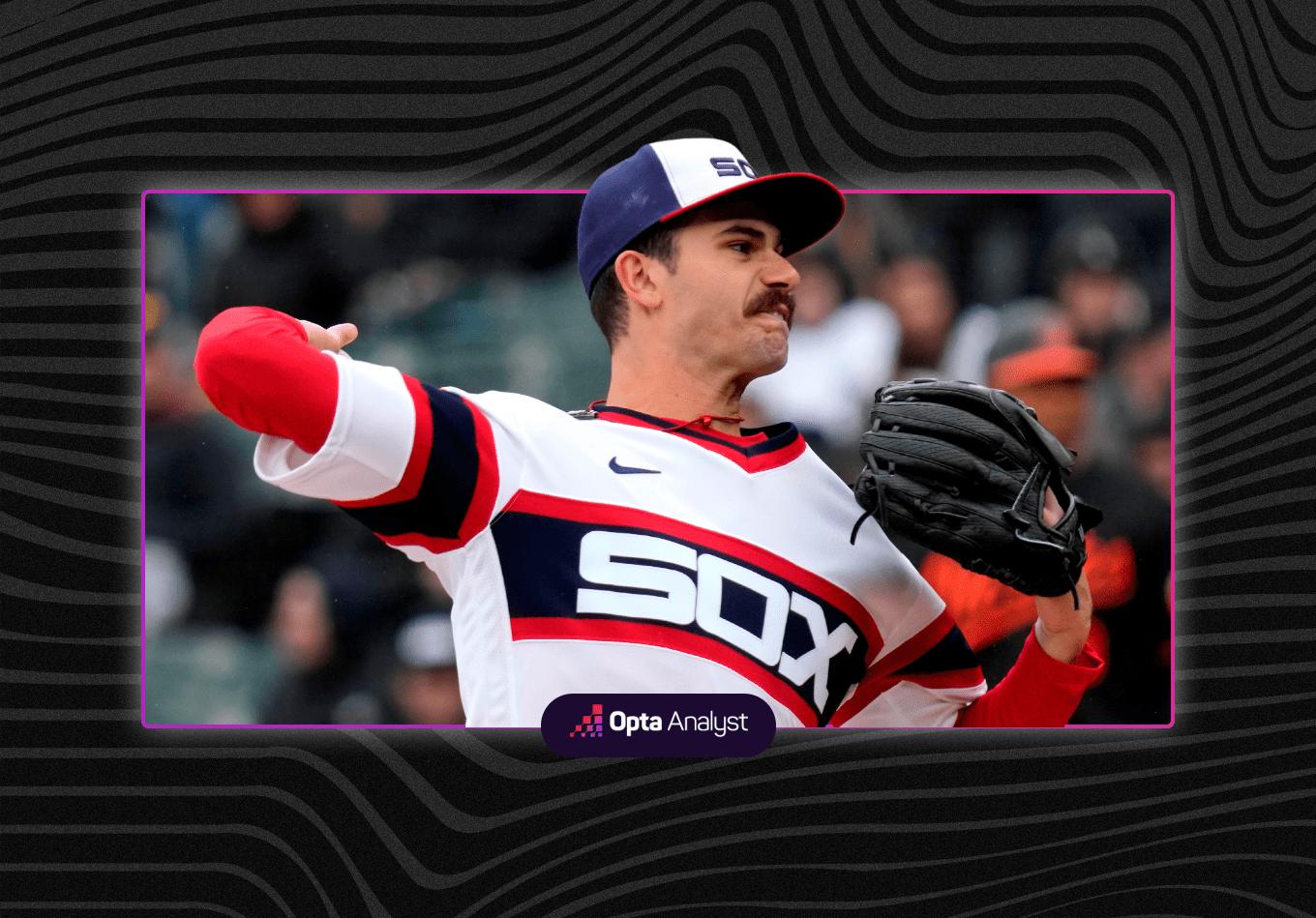As pitchers slowly fly off the free agent board, the MLB trade market takes shape as a viable alternative for teams looking to improve their staffs without necessarily overpaying for them.
The Los Angeles Dodgers and the Atlanta Braves have already made impactful acquisitions by using their own prospects and players, welcoming Tyler Glasnow from the Tampa Bay Rays and Chris Sale from the Boston Red Sox, respectively.
The current landscape still presents a few attractive options for teams looking to bring in a quality starting pitcher via trade: three-time All-Star Corbin Burnes of the Milwaukee Brewers, Miami’s Jesus Luzardo, Shane Bieber of the Cleveland Guardians and, as one of the most sought-after arms of the offseason, the Chicago White Sox’s Dylan Cease.
The 28-year-old right-hander is coming off a lackluster performance this past season, but he remains a desirable trade asset when judging the market. According to reports, lots of postseason contenders have asked the White Sox about him.
Chicago avoided arbitration with the Scott Boras client by agreeing to an $8 million deal after Cease finished with a 4.58 ERA as well as the highest WHIP among qualified American League starters at 1.42 last season. That’s a far cry from his 2.20 ERA and 1.11 WHIP in 2022, when he was one of the three AL Cy Young Award finalists.
The gap between his 2022 and 2023 ERA is significant. The difference in FIP (Fielding Independent Pitching) between the two regular seasons is much lower, but still rather significant: 3.03 and 3.72 respectively.
What happened with the former Chicago Cubs farmhand last year? Is the 2023 Opening Day starter still an ace? Is he worth whatever packages the White Sox have asked teams for in potential trades?
According to major league insider Bob Nightengale, White Sox GM Chris Getz said they have spoken to plenty of teams about trading Cease, but nothing has come close as of yet. Recent reports suggest the AL Central club continues to hold out for two premium minor-league prospects and two others in return.
These rumors have been swirling for weeks, but the White Sox are holding steady for the best possible return. Cease is moving closer to free agency, and the Sox aren’t particularly close to competing for a playoff spot, so a trade appears to be in everybody’s best interest.
Cease had a 3.91 ERA in 2021 before the 2.20 and 4.58 in the subsequent two years. He’s the ultimate roller-coaster experience when it comes to run prevention.
Cease walks too many batters (4.02 BB/9 for his career) and allows too much hard contact to ever post a 2.20 ERA again. In fact, looking at his BABIP (Batting Average on Balls in Play) from the last three campaigns, it’s easy to see the outlier:
- 2021: .309
- 2022: .260
- 2023: .330
Why did Cease become so hittable in 2023? Well, while he throws a curveball, he mostly relies on two offerings: the four-seam fastball and slider.
The former lost more than one mph of velocity on average, and the latter was also significantly worse than it was in 2022.

Problems With The Slider
In that magical 2022 season, Cease’s slider was the single-most dominant pitch in MLB, according to raw value (RV-). It accumulated a league-best RV- 33 (lower is better for pitchers).
However, in 2023, the pitch fell all the way down to RV- 5.6 – a huge drop in effectiveness.
In terms of contact+ and whiff+, Cease’s slider rated similarly in 2022 and 2023. However, when we look at his BIP+ – a metric that analyzes how much damage hitters inflict on contact against his pitches – the slider went from 35 (elite) to 103 (slightly below-average).
That suggests his pitch command was an issue (in fact, his command+ on the slider went from 103 in 2022 to 96 in 2023). In other words, his location often caught too much of the plate last season than in 2022:
Due to Cease allowing too much damage on the slider, his pitch-usage split changed: He used 40.7% heaters and 42.9% sliders in 2022, but last season, it was more fastballs (43.2%) than his go-to breaking pitch (38.6%).
Cease’s best version is when he’s thoroughly confident on the effectiveness of his slider, using it more often than his fastball. That didn’t happen last year.
All things considered, Cease’s RV- (a rate stat that tells us how a pitcher performs relative to the league average of 100) was an elite 68 in 2022 and a disappointing 95 in 2023 – still slightly above average, but much worse than anticipated.
Focusing exclusively on his slider, the RV- of the pitch last season (86) differs way too much from what it was a year earlier (21).
Where Cease Ranks on the Trade Market
It’s likely Cease’s true talent level lies around his 2021 campaign, when he had the 3.91 ERA and 226 strikeouts. While his command is spotty, there’s no denying he can miss bats even when posting a mediocre ERA, like he did with 214 strikeouts last season.
A relatively healthy sub-4.00 ERA pitcher with more than 200 strikeouts per year and the ability to approach 170-180 innings every season is still a valuable asset. It’s why Getz is trying to maximize his resources.
Former San Diego Padres ace Blake Snell and ex-New York Yankees and Texas Rangers starter Jordan Montgomery remain two of the top free-agent pitchers available, though they may come with a high price tag.
When it comes to pitchers available via trade, it’s likely general managers would prefer Burnes (recent reports state he is not likely to be moved) or Luzardo when assessing only skill level. Cease, though, is much more enticing than the declining Bieber.
Burnes and Bieber have only one year (2024) of team control remaining, which makes Cease and his two seasons more attractive. Luzardo is controllable for three more campaigns and might fetch the biggest package of all in the event he’s traded.
The bottom line is Cease is a talented, yet inconsistent pitcher with two years of control who might be a good investment for a contender – as long as he’s not expected to be a true, sub-3.00s ERA ace.
